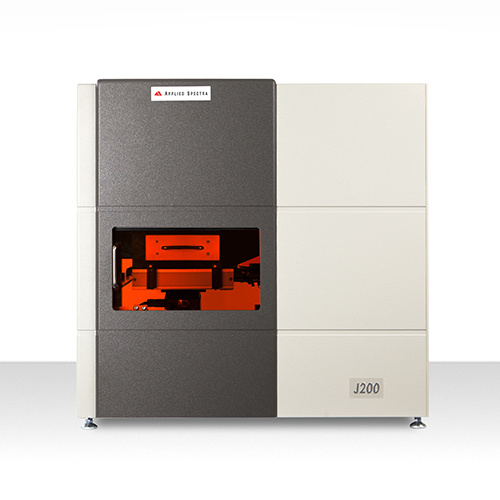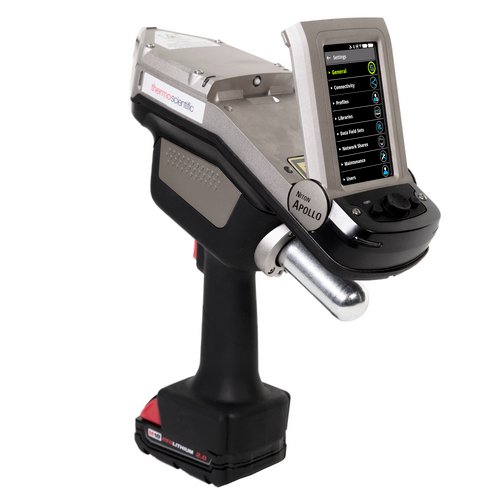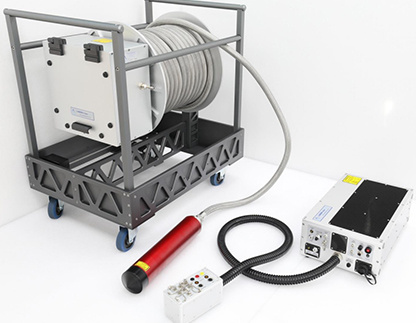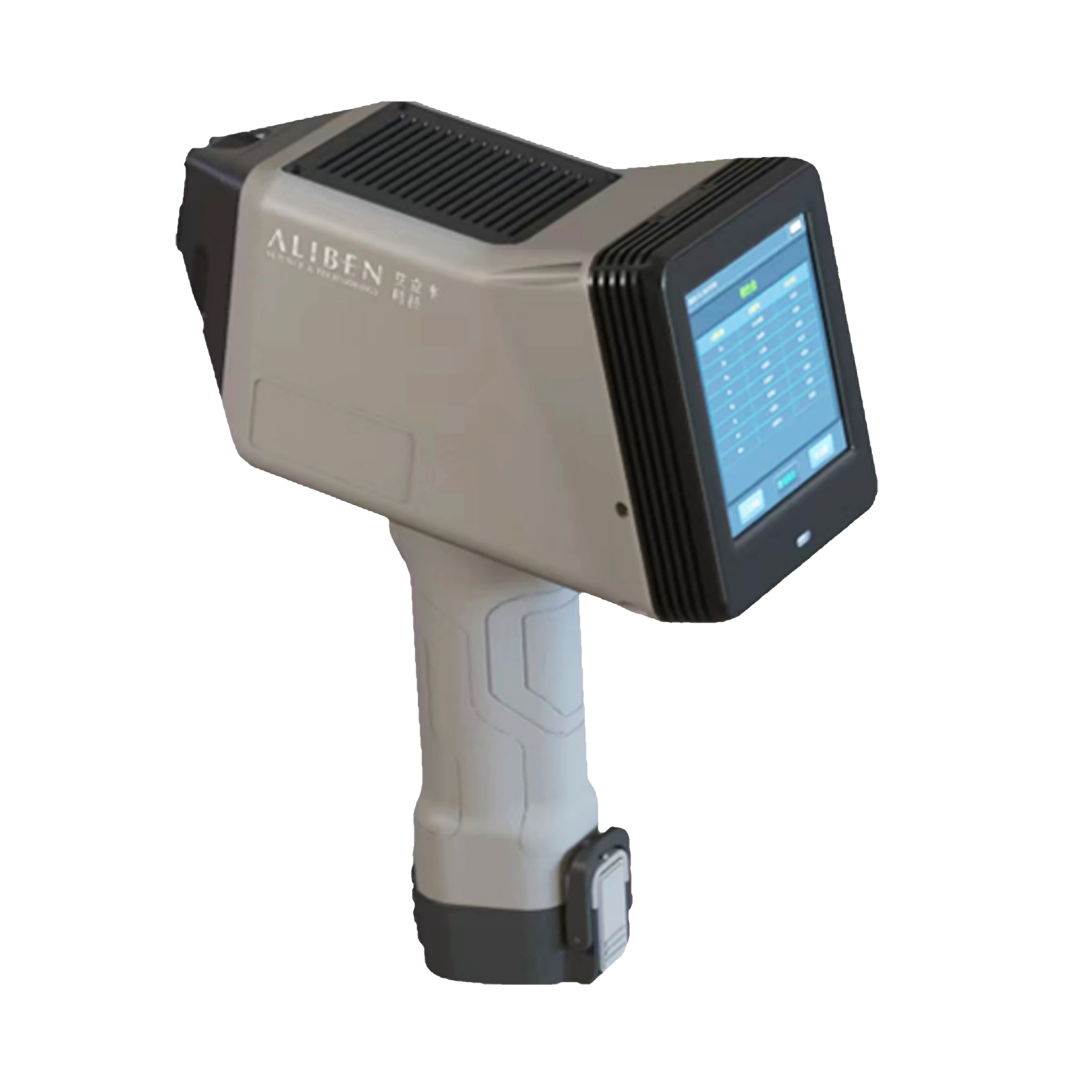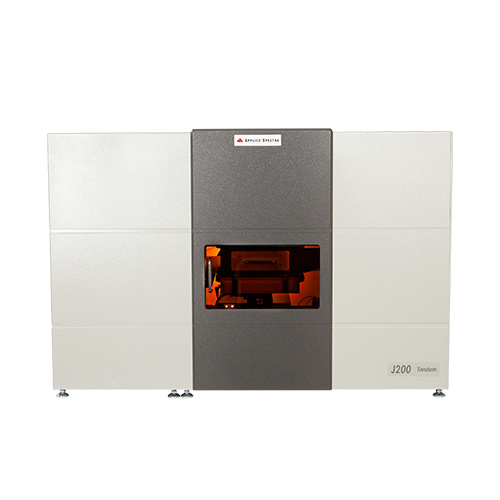方案详情
文
犯罪现场可以为调查所发生的事情提供有价值的信息。尽管DNA分析盛行,但痕量证据可以为破案奠定坚实的基础。痕量证据包括玻璃、头发、纤维、油漆和聚合物等物品。痕量证据可以帮助建立人、物和地点之间的联系。
这里提到的案例将着眼于确定从嫌疑人的车辆中找到的油漆的元素特征是否与从犯罪现场找到的油漆样品进行区分的能力。研究人员从护栏、交通标志和嫌疑人的汽车上提取了蓝色油漆样本。
可以使用光学显微镜、扫描电子显微镜/能量色散x射线光谱(SEM/EDS)、XRF或XRD来比较油漆样品。光学显微镜用于视觉比较,但不是决定性的。SEM/EDS可以区分不同的油漆样品,但油漆是不导电的,所以需要进行样品制备。X射线荧光光谱(XRF)或X射线衍射光谱(XRD)可以分析单层油漆,多层油漆样品可能存在问题,且其元素覆盖范围有限。
激光诱导击穿光谱(LIBS)为样品中的每一个元素提供了快速微区分析。LIBS光谱数据丰富,提供了独特的类指纹数据,用于提供良好的识别能力。另外,LIBS比XRF具有分析多层油漆样品的能力。深度分析是很重要的,因为许多汽车OEM涂层(如BASF)通常由4层组成,包括电泳层、中涂层、色漆层和清漆层。最近,LIBS深度分析报告指出,彩色油漆和白色油漆的分辨率分别为99.6%和85.6%。
方案详情

Discrimination of Paint Samples by Laser InducedBreakdown Spectroscopy (LIBS)2 of 4 Si CNaLiHgPb Discrimination of Paint Samples byLaser Induced Breakdown Spectroscopy (LIBS)Special Guest Author: Edward Chip Pollock, Supervising Criminalist forthe Sacramento County District Attorney's OfficeJhanis. J. Gonzalez A crime scene can provide valuable information to aninvestigation as to what may have taken place. Despitethe prevalence of DNA analysis, trace evidence can builda solid foundation for solving the case. Trace evidencecases include items such as glass, hair, fibers, paints,and polymers. Trace evidence can help establish linksbetween people, objects, and places. The case presented here will look at the ability todetermine if the elemental profile of the paint recoveredfrom a suspect’s vehicle is indistinguishable to the paintsamples recovered from a crime scene. Blue paintsamples were obtained from the suspect’s vehicle, aguard rail, and from a traffic sign. Paint samples can be compared by using an opticalmicroscope, scanning electronmicroscopy/energydispersive X-ray spectroscopy (SEM/EDS), XRF, or XRD.1An optical microscope is used for visual comparison butis not definitive. :SEM/EDS can discriminate betweenpaint samples but paint is non-conductive so it requiresadditional sample preparation. XRF or XRD candistinguish single paint layers, however, the elementalcoverage is limited and multi-layered paint samples canbe problematic. Laser Induced Breakdown Spectroscopy (LIBS) offersrapid turn-around time and microscale spatial analysisfor every element within a sample. LIBS spectra are richin data and offer unique fingerprint-like data that is usedto provide good discrimination capability. Additionally, LIBS offers the advantage over XRF with theability to analyze multiple layers of a given paint sample.2Depth analysis is important since many automotiveOEM coatings(e.g. BASF) normally consist of 4 layersincluding an E-coat, a primer base coat, a base colorcoat, and a clear coat. Recently, a depth analysis LIBSanalysis reported discrimination of 99.6% and 85.6% forcolor paints and white paints, respectively.1 Operating Parameters Applied Spectra Inc.’s J200 LIBS Instrument 266 nm Nd:YAG laser (ns) and a broadband CCD (EC) detector Applied Spectra Axiom Software · FlexTM sample chamber with helium or argon gas flow 3 blue paint samples: Item 1 -suspect vehicle Item 2- guard rail ltem 1 Item 2 Item 3 Item 3 -traffic sign ●LLIBS data analyzed and converted into images using Applied Spectra'sData Analysis Software Sample Analysis In this case study, a paint sample was obtained from a suspect’s vehicleand compared to paint samples matching the color of the suspect’s vehicle Figure 1. Photographic images for the front and backside of items 1, 2, and 3. collected from a guard rail and a traffic sign at a crime scene. These samples were sent for elemental analysisby LIBS to determine if the paint on the guard rail or traffic sign was indistinguishable or was similar to the paintrecovered from the suspect's car, thus linking the vehicle to the crime scene. Figure 1 shows photographic images of the 3 blue paint samples, with front and back side displayed. All 3 samplesvisually looked the same. Figures 2 and 3 show photographic images of the front and side of each paint samplefrom an optical microscope (5X, 10X, and 20X magnification). No differences can be discerned from the magnifiedphotographic images for the front view of the samples. Items 2 and 3 appear to be similar for the magnified (10X and20X) side view photographic images. Item 1 Item 2 Item 3 5x 10x Figure 3. Magnified (5x,10x, and 20x) photographicimages for the side view of items 1, 2, and 3. The 3 paint samples (listed asitems 1, 2, and 3) were analyzedusingApplied Spectra’s J200LIBS instrument. A depth profilemethod similar to the one reportedby Mclntee was used such thatdata were acquired for every layerof the paint sample. Figure 4shows the overlaid spectracollected from each paint sample.Al and Ti were measured as the main composition of the paint samples, with detectable amounts of Mg, Sr, Si, Ba, Na,H, K, and O. Each of the spectra collected from the paint samples was unique and could be considered the fingerprint for thatsample. Comparison of these spectra using Principal Component Analysis (PCA) suggests that items 1 and 2originated from the same source (Fig.5). In addition to the PCA plot, the elemental depth profile for each paint sample was compared for further discrimination.Ba, Ti,Al, and H proved to be the most definitive Figure 4 Accumulated LIBS spectra for items 1, 2, and 3. These paint samples were made up of a clear coat, base coat,and primer coat. The depth profiles showed no noticeabledifference in the clear coat, but did show differences in thebase coat and primer coat layers of these samples. The depthprofile for Ba showed similar responses for the clear and basecoats, but a significant difference in items 1 and 2 comparedto item 3. For Al, item 3 had a higher amount in the base coat and theprimer coat as compared to items 1 and 2. A larger amount ofTi was detected in the base coat and primer coat for item 3 ascompared to items 1 and 2. H had a noticeable difference inthe base coat for items 1 and 2 compared to item 3, but lookedvery similar for the clear and primer coats. 一 一 一 一 一 Figure 5 Principal component analysis (PCA) based off of LIBSspectra collected for items 1, 2, and 3. ( Telephone: +1510.657.7679Sales Support : +1510.657.7679x410 ) Figure 6. Depth profile for Ba, Ti, Al, and H for items 1, 2, and 3. Figure 7.3D elemental images (Al, Ti, Ba, and H) comparing items 1and 3 based on LIBS analysis. Conclusion LIBS is a reliable technology for comparing trace evidence from a crime scene to a suspect. Based on the elementalanalysis obtained using LIBS, item 2 (questioned paint sample) was identified as coming from the suspect’s vehicle.The elemental profile would be combined with the comparison of color, layer thickness, layer sequence, and opticalproperties of each layer (binder, pigment, and additives) to make the final determination if the samples were indis-tinguishable. LIBS has excellent detection for the lighter elements (e.g. H, Li, Be, B, C, N, O, and F) thus resulting inbetter discrimination capabilities as compared to XRF. LIBS also does depth resolution, which results in detection ofmultiple paint layers regardless of paint layer thickness.. Edward "Chip" Pollock, Supervising Criminalist with the Sacramento County District Attorney's Office-Laboratory of ForensicServices - Chip has over 20 years of experience in forensic science and his areas of expertise include trace evidence (analysisof fibers, paints/polymers, glass, fire debris, and gunshot residue), forensic microscopy, crime scene processing, and crimescene reconstruction. He currently serves as a member of the Chemistry/Instrumental Analysis Scientific Area Committee (SAC)-Materials (Trace) Subcommittee within the Organization of Scientific Area Committee (OSAC). References ( 1. Mcntee, E., et. Al., Comparative analysis of automotive p aints by l aser induced breakdown spectroscopy and nonp a rametric permutationtests, Spectrochimica Acta Part B, 2010, 65,542-548 ) ( 2. Giakoumaki, A ., Melessanaki, K., and Anglos, D. , Laser induced breakdown spectroscopy (LIBS) in archaeological sciences- applicationsand prospects, Anal Bioanal Chem, 2007,387, 749-760. ) Applied Spectra, Inc.Telephone:+1510.657.767946665 Fremont Blvd.Sales Support:+1510.657.7679x410APPLIEDSPECTRAFremont, CA 94538 APPLIEDSPECTRAwww.AppliedSpectra.comTransforming the way the world does chemistry Applied Spectra,Inc.Fremont Blvd.Fremont, CA PPLIED SPECTRATelephone: +ales Support: +xransforming the way the world does chemistry 从油漆样品中收集到的每个光谱都是独一无二的,可以认为是该样品的指纹。使用主成分分析(PCA)对这些光谱的比较表明,第1和第2个样品来自同一来源(图5)。 图5 基于样品1、2、3 LIBS光谱的主成分分析除了PCA图外,还比较了每个油漆样品的基本深度剖面,以便进一步鉴别。Ba、Ti、Al和H被证明是区分油漆样品的最确定的元素。这些油漆样品由一层清漆、一层中间漆和一层底漆组成。样品的深度分布在清漆层上没有明显的差异,但在中间漆层和底漆层上有差异。Ba的深度分布对清漆层和中间漆层的响应相似,但样品1和2与样品3相比有显著差异。Al方面,样品3的中间漆和底漆的用量高于样品1和2。样品3的中间漆和底漆中检测到的Ti含量高于样品1和2。样品1和2的中间漆与样品3有明显的区别,但透明漆和底漆看起来非常相似。LIBS谱、PCA图和深度剖析清楚地表明,样品1和2来自同一来源,但样品3不同。对于样品1和3,我们创建了3D元素图像来显示样品的差异(图7)。这些图被归一化到每个元素(Al、Ti、Ba和H)的最大强度。样品1的Ti 3D图最容易看到3层(透明层、中间漆层和底漆层)。图6 样品1、2、3中Ba、Ti、Al、H深度剖析图7 根据LIBS分析,样品1和3的3D元素图像(Al、Ti、Ba和H)对比
确定
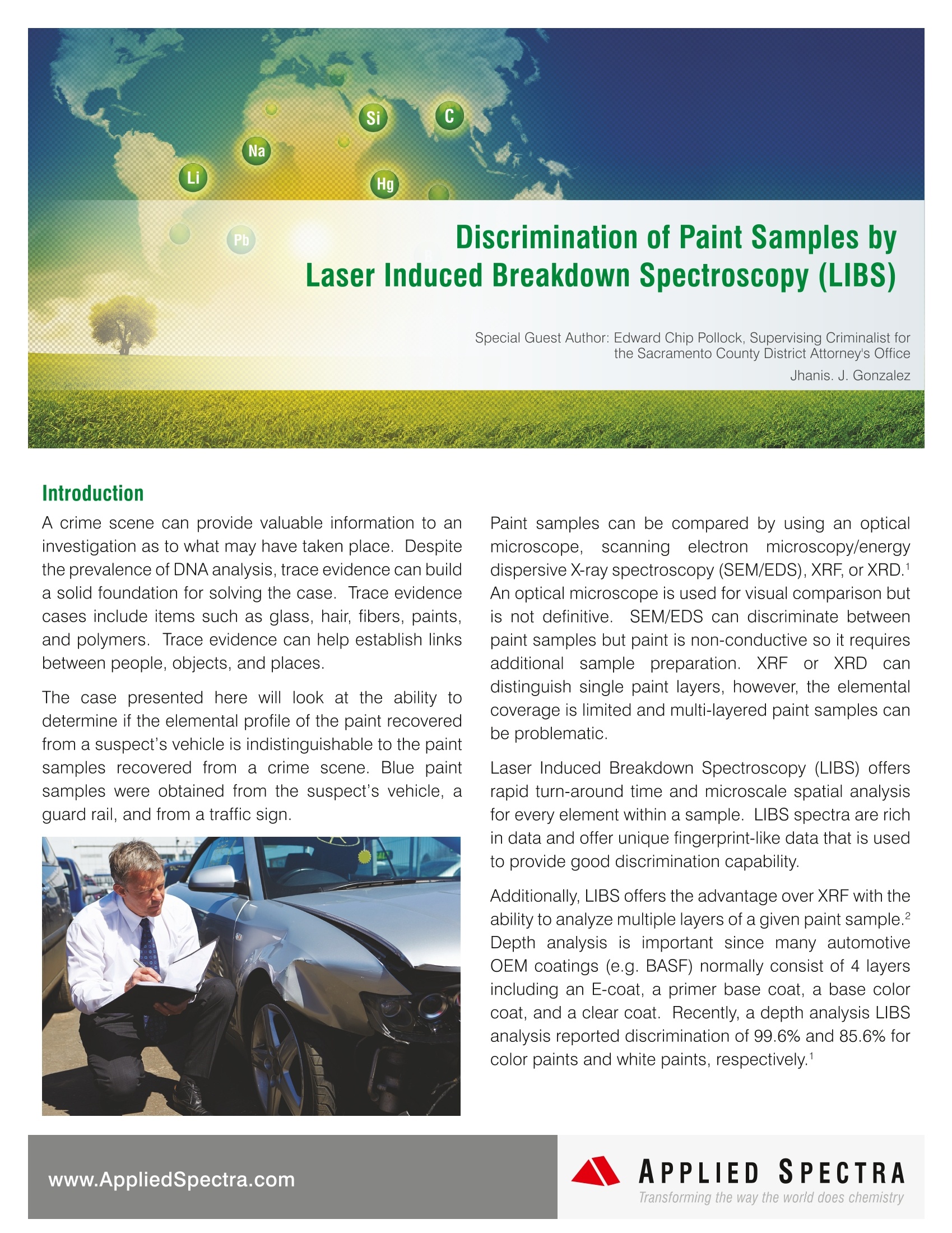
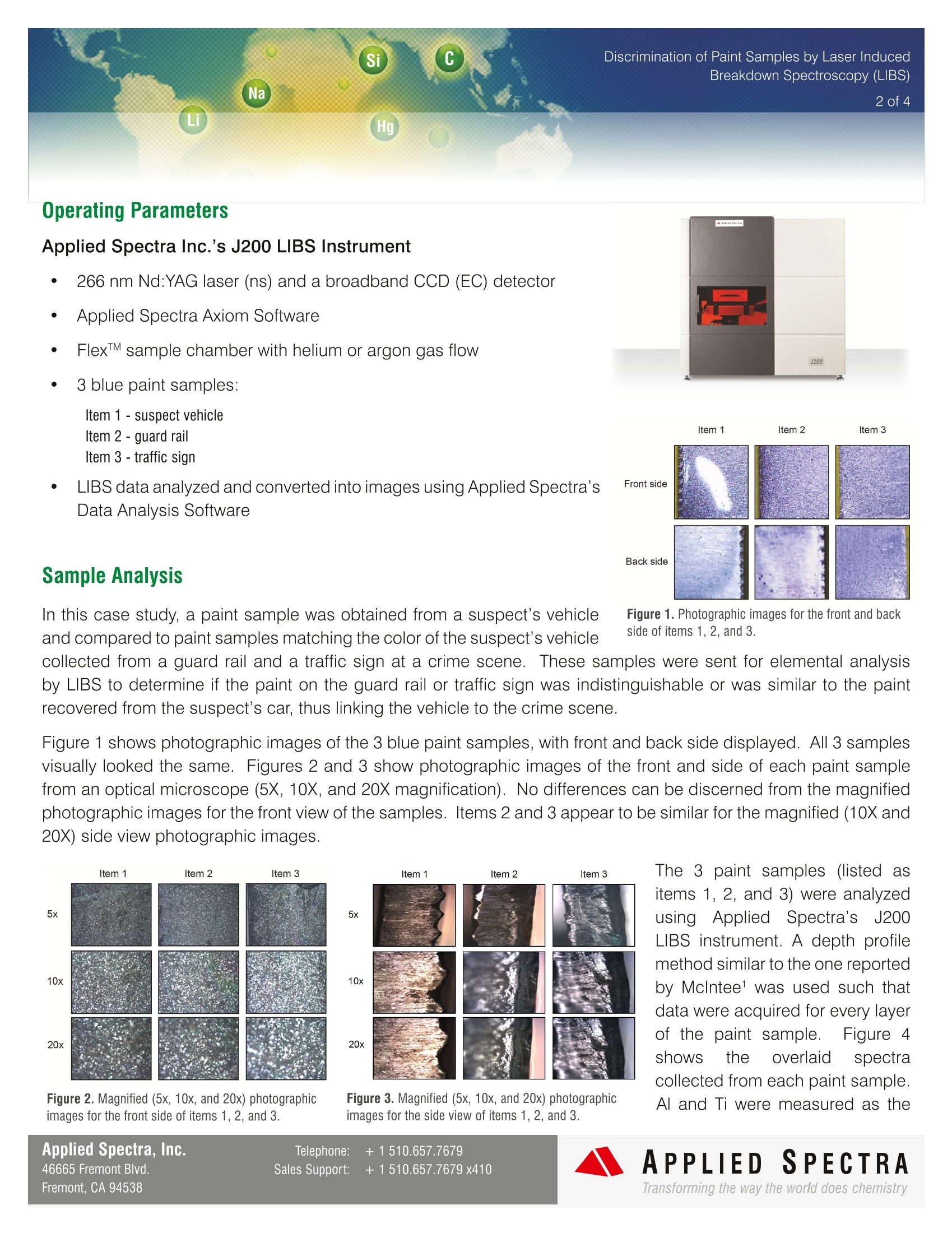
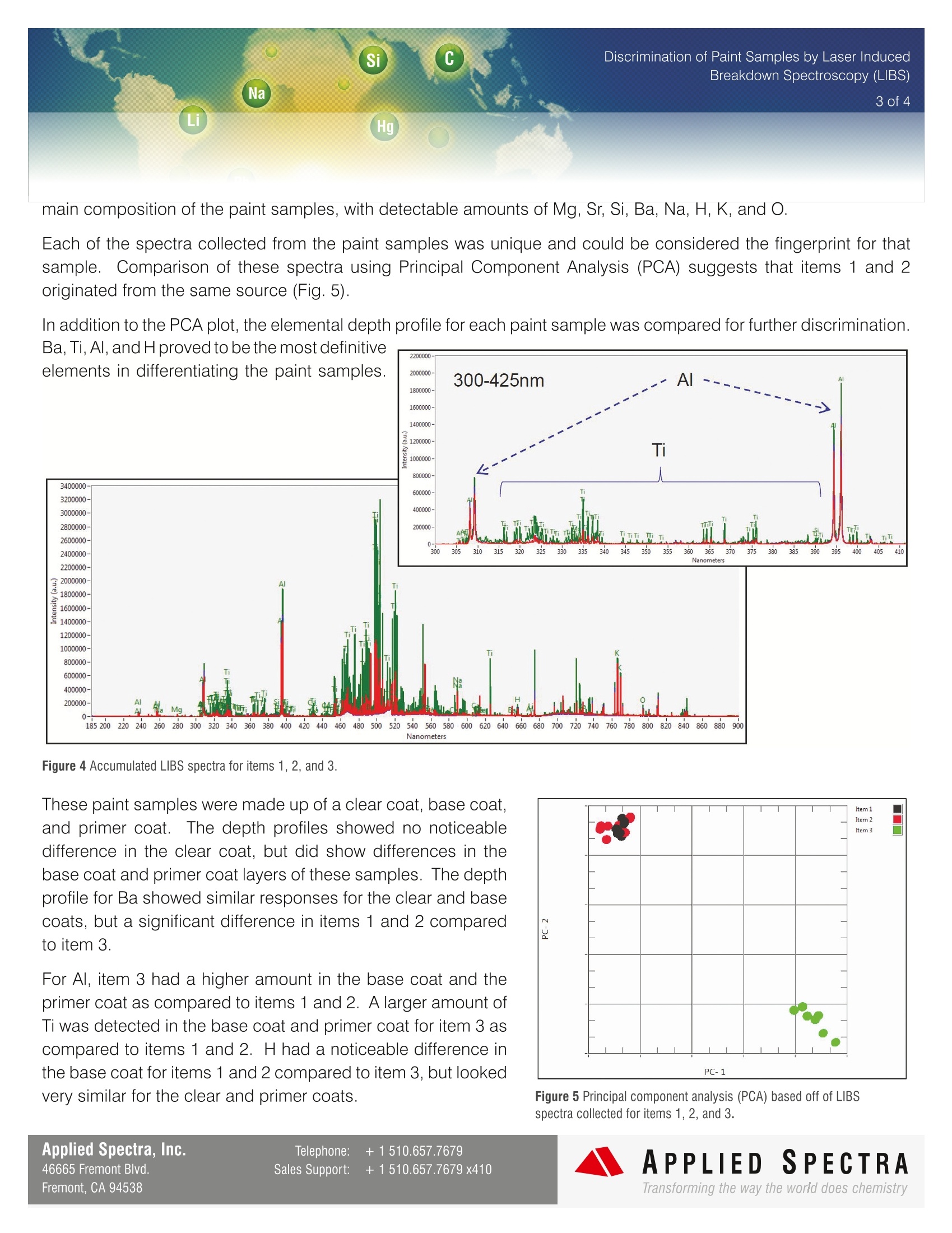
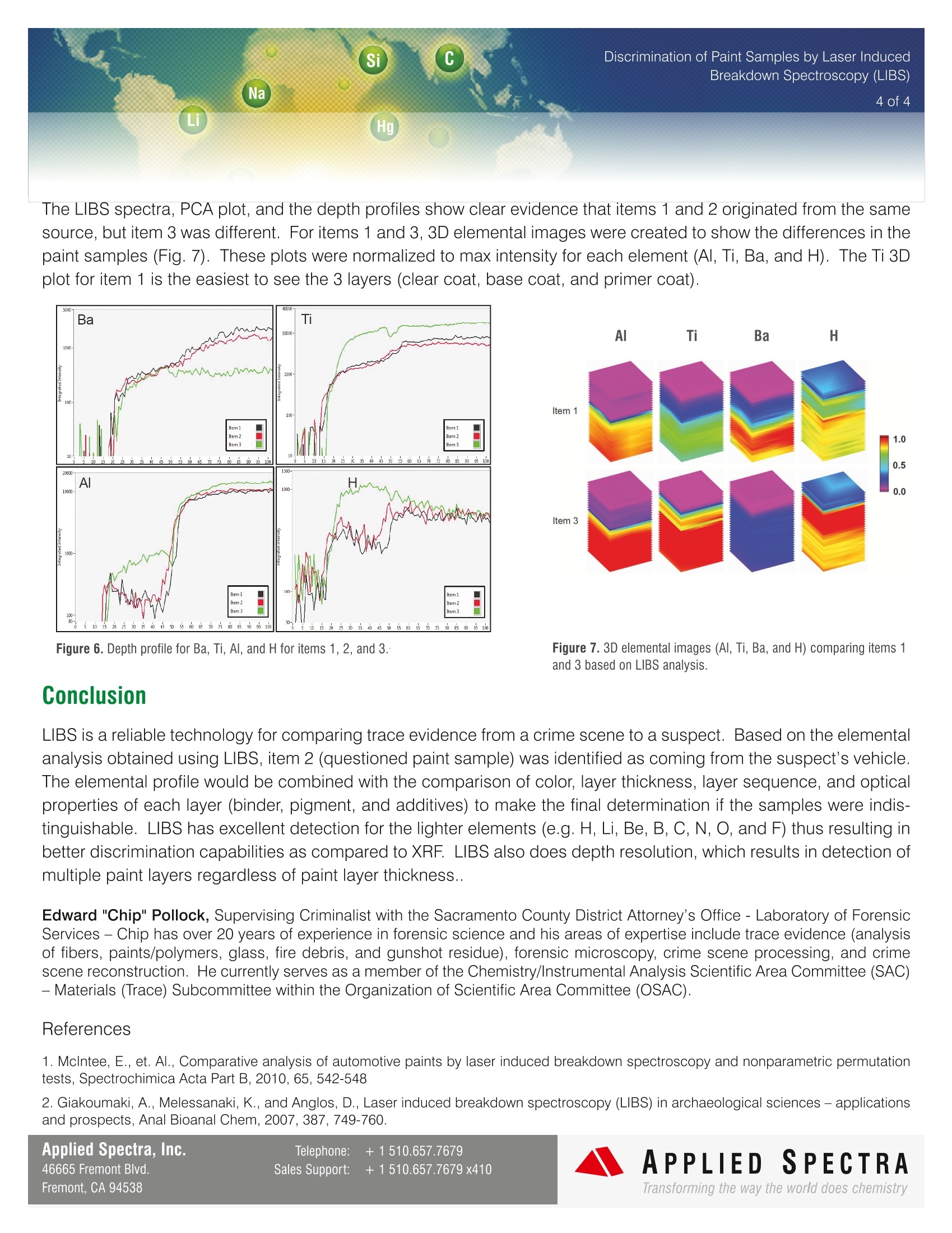
还剩2页未读,是否继续阅读?
北京富尔邦科技发展有限责任公司为您提供《汽车OEM涂层中车漆鉴别检测方案(激光诱导击穿)》,该方案主要用于汽车涂层和镀层中涂层和镀层性能检测,参考标准--,《汽车OEM涂层中车漆鉴别检测方案(激光诱导击穿)》用到的仪器有美国ASI 激光诱导击穿光谱仪(LIBS)
推荐专场
相关方案
更多

